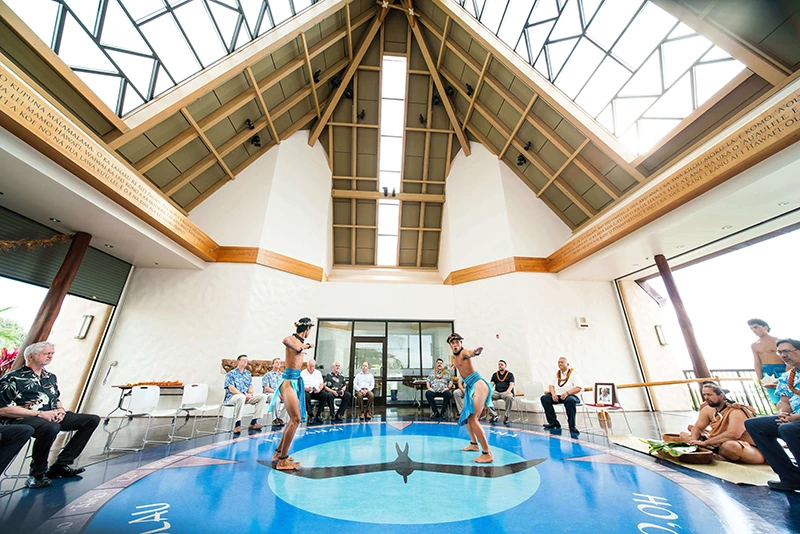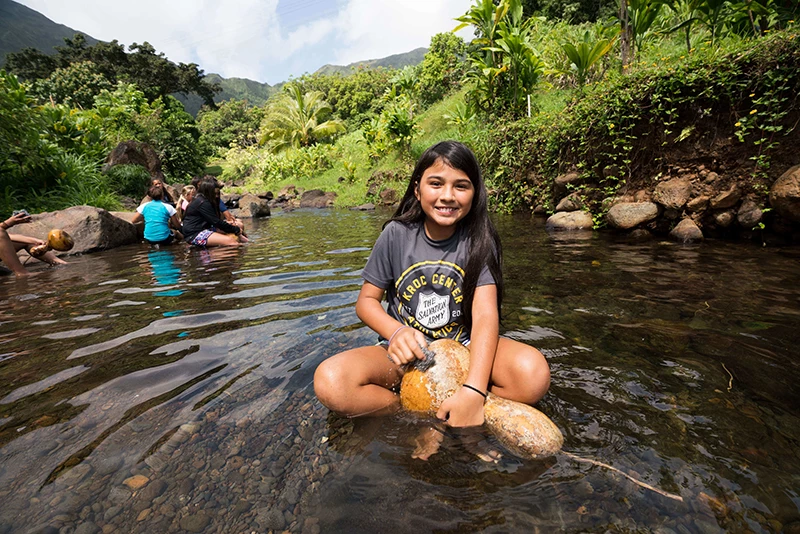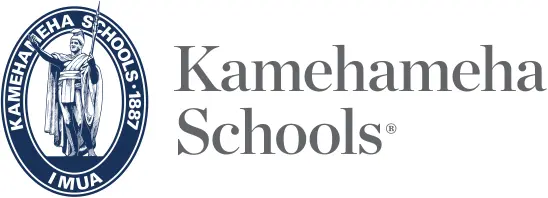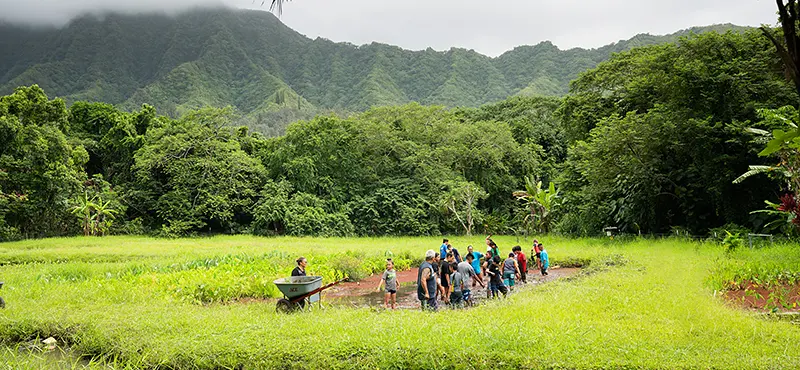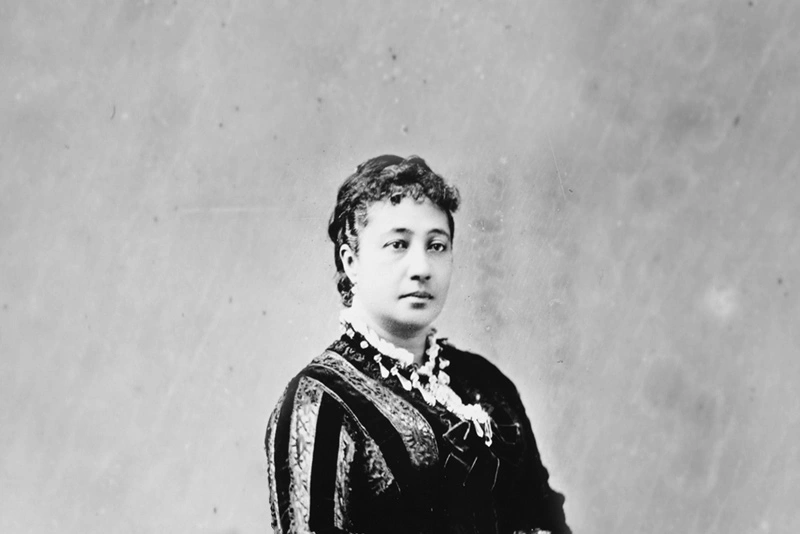Nearly 100 students and kumu from KS’ three campuses, as well as representatives from various community partners and charter schools recently shared their eco-conscious ideas with conservation pros at the World Conservation Congress (WCC) Students’ Day. The Kamehameha contingent was led by KSK Science Department Chair Chris Blake.
The Sept 6. student event at the Hawaii Convention Center also served as a learning experience for haumāna. Event speakers discussed everything from species conservation and Polynesian wayfinding to the link between business and biodiversity.
The student-centric experience was part of the WCC, the largest event of its kind in the world. The congress is held every four years by the International Union for Conservation of Nature. The global gathering at the Hawaii Convention Center is being held on U.S. soil for the first time after more than 60 years. This year’s event theme was “Planet at the Crossroads.”
Energized about ecology
After receiving words of inspiration from Gov. David Ige, and enjoying a mini concert by international recording artist Jack Johnson, keiki from secondary schools across the state generated a palpable buzz of excitement that reverberated throughout the Hawai‘i Convention Center at the opening of Students’ Day.
“To create something, you take your own imagination…you guys have so much (potential) for creation,” Johnson told the attendees before they dispersed to attend various breakout discussions.”
Sharing Innovative Ideas
Central to the WCC event was the Hawai‘i Youth Challenge 2020, a year-long effort wherein students collaborate on projects related to sustainability and conservation tied to their schools, communities and states. Close to 900 students representing 51 public, private, charter and home-led middle and high schools from across the state participated in the collaborative event.
Students from Blake’s Mālama Honua course attended a session led by KS Senior Program Manager Mark Ellis, a Hōkūleʻa crewmember participating in the worldwide voyage. Ellis shared some of the ancient voyaging techniques being perpetuated by the Polynesian Voyaging Society.
“I’ve been at Kamehameha all my life, so it was great to work together and see the ways that other students from different schools learn,” said Ashley Tyau, a senior at KSK who has attended the school since kindergarten. “It was an eye-opening experience. I really liked the mission of gathering schools to make the Earth a better place.”
Students engaged in a “Design Thinking” process to create sustainable projects and environmentally conscious solutions for their schools and communities. Teams were composed of five students and a chaperone and the groups came up with ideas before joining collectively to share their brainstorms.
“The Design Thinking process is an overall system that allows students to learn about the problems that exist through observational processes, and each student comes up with two ideas or solutions then tests those concepts while receiving constructive criticism all within an hour,” Blake explains.
“The idea is that the hundreds of students here will generate thousands of ideas that could be utilized to make a difference. Our youth aren’t tainted by the constraints that adults face, they can continue to dream big as part of the iterative process; you can’t be perfect at everything, all the time.”
Adds Tyau: “One of the options we looked at was engaging the community. My idea is to create a school program geared toward conservation and helping communities through education and clean-up efforts. My group really supported me, and it would be great to see schools adopt programs like this.”
Organizers lauded KS and other community partners for contributing upwards of $60,000 collectively to help with the execution of Students’ Day. At the WCC, more than 190 countries are represented by 9,500 attendees, and Students’ Day cohort pushed that total over the 10,000 mark.
“This whole congress is about collaboration...when we join hands and work with others together, we can do great things,” Ige says.
IUCN’s approach stresses that nature conservation and human progress are not mutually exclusive. Facing tremendous forces of transformation such as climate change and dramatic socioeconomic inequality across the world, there are credible and accessible political, economic, cultural and technological choices that can promote general welfare in ways that support and even enhance our planet’s natural assets.
One of the congress’ rallying concepts is that the world is composed of complex, interdependent systems and that changes to these systems can either enhance resilience or lead to greater instability and uncertainty. In 2015, nearly 200 nations agreed to pursue goals related to sustainable development and achieving climate neutrality with the ultimate mission of improving the lives of billions of people around the globe while still keeping nature on the forefront of discussion.
STRATEGIC PLAN 2020
SP2020 is a five-year strategic plan that will guide Kamehameha Schools from 2015 to 2020. The plan marks a starting point toward KS’ Vision 2040, which envisions success for all Native Hawaiian learners.
Kamehameha’s participation at the WCC aligns with Goal 3 of SP2020, which involves managing ks resources and lands to enhance prudent and sustainable use, responsible stewardship and supportive community relationships. KS’ outcomes, measures and targets will be integrated surrounding its educational, financial, cultural, community, agricultural and sustainability efforts via Action 6 of KS’10 actions tor fiscal year 2016-2017.
World Conservation Congress
When & Where: The collaborative conference continues through Sept. 10 at the Hawai‘i Convention Center as well as at satellite sites for certain events, and the exhibition is open to the general public through Sept. 9 from 11 a.m. to 5 p.m.
WCC – By the Numbers:
>Across Hawai‘i’s main eight islands, the land area of 6,500 square miles contains all the world’s major ecological zones and more unique species than any other place similar in size on Earth.
>Hawai‘i’s boundaries contain 2.86 million acres of ocean area and 410,000 acres of coral reef.
>Hawai‘i is known as the “endangered species capitol of the world,” and is home to nearly one-third of the birds and plants on the U.S. Endangered Species List. The Islands are also faced with the worst invasive species problem of any U.S. state thanks to the insects, diseases, snakes, rats, weeds and other factors that threaten the state’s natural environment and economy.
Web: For more information, log on to iucnworldconservationcongress.org.
TAGS
CATEGORIES
Print with photos
Print text only

